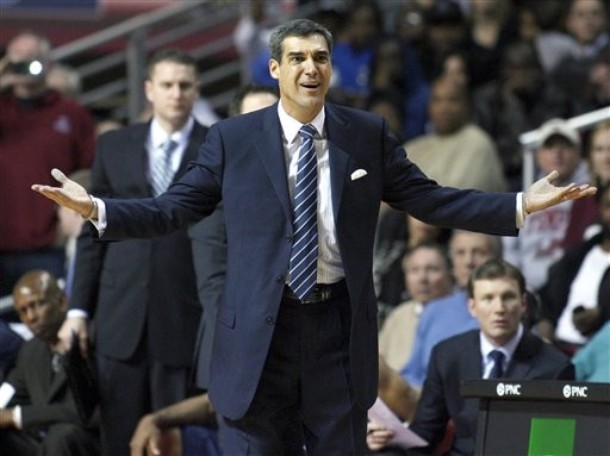Villanova’s Success Predicated on Slowing Down Its Offense
Posted by Justin Kundrat on January 5th, 2016To a casual fan, Villanova’s woes appear painfully obvious: The Wildcats are shooting — and missing — too many threes. But approach the issue at the next level and shooting isn’t the problem as much as the quick tempo it produces. Jay Wright’s most successful teams have thrived by forcing turnovers and attacking with a well-balanced offense. In recent years, however, its healthy ratio between points in the paint and from three has faltered, with the Wildcats becoming increasingly dependent on perimeter shooting. The numbers show that Villanova has shot over 40 percent of its field goal attempts from long range over the last three seasons and that share has gotten frighteningly close to half of all of its shots (48.3%) this year. As a result, the team’s overall accuracy (32%) has experienced a sharp dip (from 39 percent a year ago to 32 percent this season). We should expect Villanova’s outside shooting to revert to the mean somewhat, but all signs so far suggest that this year’s squad performs best in a low-possession game in which its offense finds greater balance beyond such voluminous use of the three-point shot.

In somewhat of a surprise, Jay Wright’s crew has been more efficient when they have limited their possessions per game. (H. Rumph Jr./AP)
On one hand, Villanova currently leads the country in two-point shooting percentage at 63.1 percent. This is largely a testament to the skill sets of its personnel: Jalen Brunson and Josh Hart are excellent at getting to the rim; Ryan Arcidiacono and Kris Jenkins are strong mid-range shooters. Despite the team’s relative struggles from beyond the arc this season, opponents still have to respect its shooting pedigree and volume, which opens their driving lanes. As a result, Villanova has proven capable of getting into the lane and scoring. Still, the Wildcats haven’t taken enough of those high-percentage shots, instead often passing it back out to the perimeter in search of an extra point. Despite Villanova’s exceptional 72.1 percent shooting at the rim (ninth nationally), these looks represent fewer than a third (32.4%) of the team’s total shot attempts (273rd in the nation). This aversion to attacking the rim is also revealed by the team’s free throw rate, in which Villanova ranks 314th this season after finishing among the top 100 in each of the last seven years. Needless to say, this squad’s large number of three-point attempts is hurting its offensive efficiency in a number of ways, some more notable than others.
The data also shows that Villanova becomes less efficient offensively as the game quickens. As the chart below shows, the Wildcats are averaging 1.29 points per possession in games where Wright’s team plays 60 or fewer offensive possessions. In games of 70 or more possessions, efficiency plummets to 1.09 points per possession.

The chart below also illustrates how Villanova’s three-point shooting trends downward as its number of offensive possessions increases.

One more negative efficiency point: Villanova’s shooting away from the rim is noticeably worse in transition despite the greater likelihood that there will be more open looks in such situations. Per Hoop-Math, Villanova shoots 33.3 percent on two-point jumpers and 29.1 percent on threes in transition, compared with 49.3 percent and 32.0 percent in non-transition settings.
It’s a curious conclusion for a team that has so many offensive weapons, but the numbers suggests that Villanova flourishes when it slows the pace and uses its penetrating guards to attack the basket. Wright employed this strategy in its first two games of Big East play and won both handily, shooting 86 percent from two-point range and a staggering 94 percent at the rim. Might it be time for the head coach to completely slam the brakes on his Wildcats this season?










































